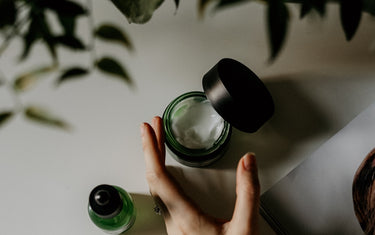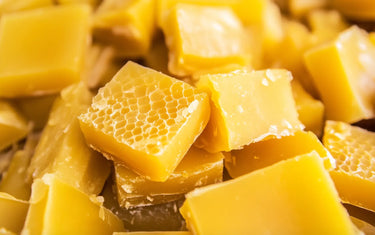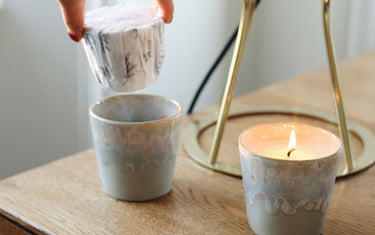7 min read / 3 November 2023 / yasmin sharp
How do I Get a CPSR Certification in the UK?
Unlock the path to CPSR certification in the UK with our comprehensive guide, navigating you through the steps to ensure a seamless process.
Share this post

If you have plans to sell a cosmetic product, you will first need to secure CPSR certification, which ensures the ingredients, substances and formulation have all undergone rigorous safety checks, including a cosmetic product safety report.
The process involves hiring a qualified CPSR safety assessor to analyse every aspect of the product, including the potential health risks, packaging and how it will be used by the consumer.
Here we explain how to get a CPSR in the UK and we also discuss the various steps involved in the assessment, so you have a better idea of what to expect.
What is a CPSR?A Cosmetic Product Safety Report (CPSR) is produced by a qualified cosmetic safety assessor, who will investigate the health and safety aspects of your product. This means that any cosmetic product being made available for sale must first undergo a safety assessment overseen by a qualified person. Cosmetics Regulation 1223/2009 and UK Schedule 34 to the Product Safety and Metrology etc. (Amendment etc.) (EU Exit) Regulations 2019 are used to provide safety for cosmetic product consumers. |

What does a CPSR involve?
There are two parts to a CPSR assessment, part A and part B, and requires the inclusion of the following information:
Part A: Cosmetic product safety information
- Quantitative and qualitative composition of the cosmetic product
- Physical/chemical characteristics and stability of the cosmetic product
- Microbiological quality
- Impurities, traces, information about the packaging material
- Normal and reasonably foreseeable use
- Exposure to the cosmetic product
- Exposure to the substances
- Toxicological profile of the substances
- Undesirable effects and serious undesirable effects
- Information on the cosmetic product
Part B: Cosmetic product safety assessment
- Assessment conclusion
- Labelled warnings and instructions of use
- Reasoning
- Assessor’s credentials and approval of part B
How does a CPSR work?
CPSR certification requires the assessor to go through each of the above sections (where relevant to your product) to ensure it is safe for public sale.
Part A: Cosmetic product safety information
1. Quantitative and qualitative composition of the cosmetic product
This section details the raw materials using your product, which also involves highlighting any impurities or other chemicals that may be relevant.
For example, if a product contains a polymer called carbomer that has been made with benzene, then this would be flagged, as it is banned in the EU.
To become compliant, you would need to switch to a carbomer that has been made without benzene.
2. Physical/chemical characteristics and stability of the cosmetic product
The physical chemical characteristics of the product are analysed in this section. This includes noting things like its scent, colour and whether it is a liquid or solid.
The assessor will also consider the stability of the formulation being used.
Shelf-life studies are reviewed, as this will provide a clearer picture about how long the chemical and physical characteristics can remain stable.
The more stable it is, the longer the shelf life and expiration date will be.
3. Microbiological quality
A challenge test, which involves adding fungi and bacteria to the product, or preservative efficacy test, may also be carried out.
This is to test the product’s microbiological risk and its potential to grow yeast and bacteria, as these can cause severe skin and eye infections.
High alcohol products and soaps are considered to be ‘self-preserving’, whilst other products that lack water are sometimes classified as low risk.
4. Impurities, traces, information about the packaging material
The safety of your cosmetic product can be at risk if there are impurities in the raw materials being used.
Testing of the packaging is vital, as low-quality materials can contain contaminants such as pesticides, heavy metals, rubber components and other harmful substances.
Your CPSR assessor will document any contaminants found in the packaging to determine whether they could pose a risk to the consumer.
5. Normal and reasonably foreseeable use
The way in which the consumer will use your product is also part of the assessment, which allows for any relevant guidance or warnings to be included on the packaging and product details.
For example, if you are selling a shampoo product, it would be normal to assume it will be used on the hair and will also interact with other parts of the body due to running water.
Or, if you have developed special shampoo that should not come into contact with other areas of the body, the assessor will note that additional instructions or warnings will need to be included as part of the directions of use.
6. Exposure to the cosmetic product
This section involves the assessor stating the type of consumer that will be using the product, how much is likely to be used, how often, where it should be applied on the body, as well as any unintentional exposure that could occur.
7. Exposure to the substances
In addition to analysing how the consumer will be exposed to the product, the assessor will also calculate how this relates to every individual ingredient.
Focus is given to whether the ingredient is absorbed through the skin and into the body. This is because some substances will remain on the surface of the skin, whilst others are absorbed and some, such as alcohol, can completely evaporate.
8. Toxicological profile of the substances
Assessment of the safety information for the ingredients is next. The aim here is to understand the toxicity of every substance used in the product.
This relates to how ingredients could cause eye or skin irritation, allergies, system toxicity (organ damage etc.), phototoxicity (UV ray damage) and genotoxicity (DNA damage).
A Margin of Safety (MoS) measurement is used to compare the difference between harmful exposure and real exposure. If the actual exposure of the ingredient is at least 100x lower than the harmful exposure, then it is considered safe.
9. Undesirable effects and serious undesirable effects
Consumers may still experience health issues such as allergies or skin irritation when using the product, even after all the safety testing aspects have been conducted.
The assessor will look at any clinical trial or patch test data that has been produced during the development phase of the product.
For products that have already been on the market, reports of any adverse reactions or complaints raised by consumers must be passed onto the assessor.
10. Information on the cosmetic product
The final section of Part A outlines any other product safety matters or concerns that need to be included.

Part B: Cosmetic product safety assessment
Part B of the CPSR assessment covers the:
1. Assessment conclusion
Based on all the information collected in the ten sections of Part A, the CPSR safety assessor is then able to make a final decision about the safety of the product.
2. Labelled warnings and instructions of use
This section will look at the legally defined instructions used on the label, along with any suitable warnings and instructions that should be added.
3. Reasoning
Here the assessor must provide the reasoning behind their final conclusion.
4. Assessor’s credentials and approval of part B
The final section allows space for the assessor to state their credentials and demonstrate that they are qualified for the assessment. They will also use this section to sign and date the safety assessment.

How do I get a CPSR in the UK?
If you want to get CPSR certification in the UK, the first thing to do is to find a qualified cosmetic safety assessor. A qualified cosmetic safety assessor will hold a relevant degree or diploma in dermatology, toxicology and microbiology that has been issued by a European university.
Some contract manufacturers and factories that offer production services also provide CPSR assessment in the UK. This could be via an internal R&D department or through a provider they have an existing relationship with.
Alternatively, you can simply search online to find a CPSR approved assessor. There are lots of private providers that offer a range of testing services, with many also promising fast turnaround times, if needed.
Once your product has been tested and is part of the CPSR register, you must provide the relevant information about your product to the Office for Product Safety and Standards. They will assess the CPSR assessment and determine whether the product is safe to sell to the public.
How much does a CPSR cost?
The cost of a CPSR varies depending on the fees charged by the organisation providing the assessment.
The type of CPSR test being carried out will also determine the cost. For example, there may be different charges for testing an individual product or an oil-based product. Some organisations also charge separately for saponified soaps and products that contain herbal extracts.
If you need multiple products to be tested, you may be able to get a batch discount, depending on how similar they are.
When searching for a CPSR certification provider, it is a good idea to get three quotes from separate companies so you can compare their costs and services.

CPSR certification is a detailed process that will ensure your product is safe to use by consumers, whilst also providing them with appropriate guidance.
At the same time, it keeps you compliant with current laws, so you have adequate legal protection in place, should any claims be put forward.
Whilst it may seem like there is a lot to cover, the entire process will be taken care of by a professional, and depending on their findings, you may only be required to make a few changes along the way.
Additionally, if you are looking to source high-quality products in order to make and sell cosmetic products, consider signing up to Nikura’s wholesale program. Sign up takes just a couple of minutes and gives you instant access to year-round discounts, with no minimum order quantity.









